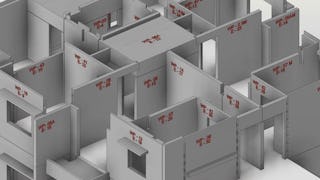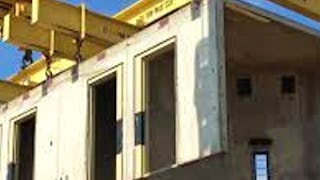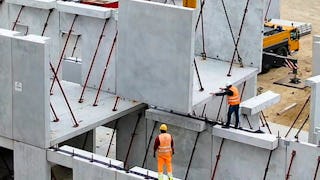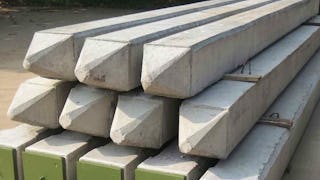The course on Precast Elements provides a comprehensive overview of precast concrete technology, highlighting its advantages over traditional cast-in-situ methods. It covers the fundamental concepts, major components, and structural systems used in precast construction, emphasizing its applications in residential, commercial, and industrial projects. Participants will learn about the classification, types, and erection of beams, slabs, columns, and walls, as well as the use of precast elements in infrastructure works. The course also addresses guidelines for selecting precast elements for different building types and explores the principles of structural stability and behavior, preparing learners to effectively implement precast solutions in various construction scenarios.

Gain next-level skills with Coursera Plus for $199 (regularly $399). Save now.

Precast Elements
This course is part of Precast Structural System Specialization

Instructor: Subject Matter Expert
Included with
Recommended experience
What you'll learn
Gain in-depth knowledge of precast concrete technology, including its fundamental concepts, major components, and structural systems.
Develop skills in selecting, designing, and erecting precast beams, slabs, columns, walls, staircases, roof elements, and infrastructure components.
Skills you'll gain
Details to know

Add to your LinkedIn profile
4 assignments
See how employees at top companies are mastering in-demand skills

Build your subject-matter expertise
- Learn new concepts from industry experts
- Gain a foundational understanding of a subject or tool
- Develop job-relevant skills with hands-on projects
- Earn a shareable career certificate

There are 4 modules in this course
This section introduces the fundamental concepts of precast concrete, contrasting it with traditional cast-in-situ methods. It covers the current industry scenario, highlighting the constraints and merits of using precast elements. Key topics include the needs, types, and features of precast concrete, as well as its advantages for various stakeholders such as owners, architects, engineers, contractors, and end-users. The module also delves into the applications of precast in residential, commercial, and industrial settings, discussing the materials used and relevant codal clauses.
What's included
13 videos1 assignment
This module provides an in-depth look at the primary components of precast construction. It begins with an introduction to beams, including their classification, types, shapes, applications, and erection methods. Slabs are thoroughly examined, with a focus on their advantages, classification, and types, including hollow core slabs and their production processes. The module also covers the selection and erection of slabs, columns, and walls, detailing their features, advantages, and types. Foundations are also discussed, providing a comprehensive understanding of these critical structural elements.
What's included
12 videos1 assignment
Building on the previous module, this section explores further key elements of precast construction. Topics include staircases, roof elements, and architectural concrete. The module addresses façade choices and applications, as well as various infrastructure works such as pipes, drains, duct banks, baggage handling tunnels, culverts, sleepers, facia elements, pavements, and channels. This module ensures a holistic understanding of the diverse applications of precast elements in different construction scenarios.
What's included
10 videos1 assignment
The final module focuses on the structural systems used in precast construction. It introduces various types and systems, including skeletal systems, portal frames, and large panel systems. The course discusses the limitations and applications of these systems, as well as specialized systems like cell box and hollow block systems. Guidelines for selecting precast elements for residential, office, industrial, and commercial buildings are provided. The module concludes with an examination of structural stability and behavior, emphasizing the engineering principles behind precast construction. Overall, this course equips participants with the knowledge and skills necessary to effectively utilize precast concrete in a variety of construction projects, enhancing efficiency, quality, and sustainability in the built environment.
What's included
11 videos1 assignment
Earn a career certificate
Add this credential to your LinkedIn profile, resume, or CV. Share it on social media and in your performance review.
Instructor

Offered by
Explore more from Environmental Science and Sustainability
 Status: Free Trial
Status: Free TrialL&T EduTech
 Status: Free Trial
Status: Free TrialL&T EduTech
 Status: Free Trial
Status: Free TrialL&T EduTech
 Status: Free Trial
Status: Free TrialL&T EduTech
Why people choose Coursera for their career





Open new doors with Coursera Plus
Unlimited access to 10,000+ world-class courses, hands-on projects, and job-ready certificate programs - all included in your subscription
Advance your career with an online degree
Earn a degree from world-class universities - 100% online
Join over 3,400 global companies that choose Coursera for Business
Upskill your employees to excel in the digital economy
Frequently asked questions
To access the course materials, assignments and to earn a Certificate, you will need to purchase the Certificate experience when you enroll in a course. You can try a Free Trial instead, or apply for Financial Aid. The course may offer 'Full Course, No Certificate' instead. This option lets you see all course materials, submit required assessments, and get a final grade. This also means that you will not be able to purchase a Certificate experience.
When you enroll in the course, you get access to all of the courses in the Specialization, and you earn a certificate when you complete the work. Your electronic Certificate will be added to your Accomplishments page - from there, you can print your Certificate or add it to your LinkedIn profile.
Yes. In select learning programs, you can apply for financial aid or a scholarship if you can’t afford the enrollment fee. If fin aid or scholarship is available for your learning program selection, you’ll find a link to apply on the description page.
More questions
Financial aid available,

